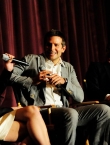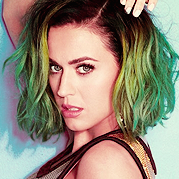
Before The Hunger Games was a multibillion-dollar enterprise, it was a series of dystopic novels by Suzanne Collins. The books had a strong following, but not one large enough to make the films into blockbusters—that was mostly left up to the marketing team at Lionsgate, the studio behind the franchise, and their resident guru, Tim Palen (newly named the studio’s chief brand officer in charge of marketing). They had to campaign for a movie whose real message, like those of so many political candidates, was in danger of being obfuscated by less-than-ideal optics—in this case, the idea of children killing children. “We took our cues from Suzanne Collins, whose books are really about how war ruins everything,” Palen explains. “So we avoided anything that was overtly action-y or that made violence look badass. But the one thing we did have was the face of Jennifer Lawrence.”
At the time, J-Law was not yet (arguably) the world’s most valuable movie star—but well on her way. The rest of the promising young cast would be lifted up by the tide of box office returns, as well. As it happens, that sense of youthful potential for transformation was a preoccupation of the books as well. “Our first set of posters for the franchise were character shots of everybody in silhouette,” Palen, who is an accomplished photographer, says of shooting the promotional art. A new book out June 29 from Assouline, Tim Palen: Photographs From the Hunger Games, collects Palen’s contemplative portraits of the entire cast in character over the first three films, many of them unseen. “The very first person I shot was Liam Hemsworth. He arrived in the studio; he was just looking out the window. And that became his poster! He just looked so fresh and innocent and handsome. Most of these actors were not known yet, and we wanted to launch them. You can’t go wrong with everybody looking staggeringly hopeful.”


















